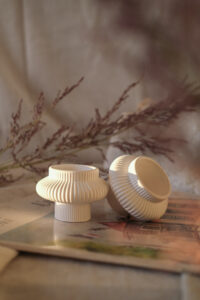Are you in search of the best cookware to enhance your culinary adventures? Well, look no further! In this article, we will explore the most sought-after information about cookware, from its safety aspects to its quality. Whether you’re a seasoned chef or just starting out in the kitchen, our comprehensive guide will provide you with all the necessary insights to make an informed decision and find the perfect cookware for your needs. Let’s uncover the secrets of the best cookware options available in the market and take your cooking experience to the next level!
What Is the Best Cookware to Buy? A Comprehensive Guide
When it comes to the world of cookware, there are countless options available, each with its own unique set of properties and benefits. Choosing the right cookware for your kitchen can be a daunting task, but fear not! This comprehensive guide will walk you through the different materials, durability, safety, versatility, heat conductivity, price range, cooking performance, maintenance, cookware sets vs. individual pieces, and brand reputation to help you make an informed decision and find the best cookware to buy.
Material
Stainless Steel
Stainless steel cookware is a popular choice among cooking enthusiasts due to its durability, sleek appearance, and versatility. It is highly resistant to rust, corrosion, and stains, making it suitable for everyday use. Stainless steel cookware also offers excellent heat-conducting properties, ensuring even heat distribution and preventing hot spots. It is compatible with various cooking methods and is dishwasher safe, making cleanup a breeze. However, stainless steel alone may not offer optimal nonstick properties, so cooking with oil or using a nonstick spray is recommended.
Cast Iron
Cast iron cookware has been cherished for generations due to its outstanding durability and heat retention capabilities. It is known for its ability to distribute heat evenly, resulting in beautifully cooked meals. Cast iron cookware can be used on almost any cooking surface, including stovetops, ovens, and even open fires. It provides excellent heat conductivity even at low temperatures and helps retain moisture in dishes. However, cast iron cookware requires regular seasoning to maintain its nonstick properties and prevent rusting. It is also relatively heavy and requires proper care to avoid damage.
Nonstick
nonstick cookware is a popular choice for those who prefer low-fat cooking options as it requires minimal oil or butter to prevent food from sticking. It is typically made from aluminum or stainless steel coated with a nonstick surface like Teflon. Nonstick cookware offers easy food release and smooth cleanup, as the nonstick coating prevents food from clinging to the pan. However, it is important to use nonmetal utensils to avoid scratching the nonstick surface, which can lead to the release of harmful chemicals. Nonstick cookware is not suitable for high-heat cooking or use with metal utensils.
Copper
Copper cookware is highly regarded by professional chefs for its excellent heat conductivity and responsiveness to temperature changes. It heats up quickly and distributes heat evenly throughout the cooking surface, allowing for precise cooking control. Copper cookware is known for its responsiveness to adjustments in heat, making it ideal for delicate recipes that require rapid temperature changes. However, copper is a reactive material and should always be lined with a nonreactive coating, such as stainless steel or tin, to prevent any potentially harmful reactions with acidic foods. Copper cookware also requires regular polishing to maintain its glossy appearance.
Hard-Anodized Aluminum
Hard-anodized aluminum cookware is known for its exceptional durability and resistance to scratches, warping, and corrosion. It undergoes an electrochemical process that hardens the surface, making it nonporous and resistant to abrasion. Hard-anodized aluminum cookware offers excellent heat conductivity, ensuring even heat distribution across the cooking surface. It is also typically coated with a nonstick layer for easy food release and effortless cleanup. Although dishwasher safe, hand washing is typically recommended to prolong the lifespan of the nonstick coating.

This image is property of images.pexels.com.
Durability
Longevity
When investing in cookware, considering its longevity is essential. Stainless steel, cast iron, copper, and hard-anodized aluminum are all known for their durability and can withstand the rigors of everyday cooking. These materials are less prone to chipping, staining, and wear, ensuring that your cookware will last for years to come. Nonstick cookware, however, may require more care to maintain its nonstick properties and prevent the coating from deteriorating over time.
Resistance to Scratches
Cookware that is resistant to scratches not only preserves its appearance but also prolongs its lifespan. Stainless steel and hard-anodized aluminum are both known for their scratch-resistant properties. Cast iron, on the other hand, can be vulnerable to scratching, especially if metal utensils are used. Copper cookware is typically lined with a protective layer to prevent scratching and maintain its integrity.
Resistance to Warping
Warping can occur when cookware is subjected to rapid temperature changes or placed under extreme heat. Stainless steel and hard-anodized aluminum are known for their resistance to warping, allowing them to maintain their shape and perform consistently. Cast iron and copper, though more susceptible to warping, can withstand high temperatures if properly cared for. Nonstick cookware may be prone to warping at higher temperatures, so it is important to read the manufacturer’s instructions before subjecting it to extreme heat.
Heat Resistance
Heat resistance is an important factor to consider when choosing cookware, especially if you plan to use it in the oven or under a broiler. Stainless steel, cast iron, copper, and hard-anodized aluminum are all oven-safe and can withstand high temperatures. Nonstick cookware, however, has a temperature threshold, and exceeding it may cause the nonstick coating to deteriorate or release harmful fumes. To ensure the longevity of your cookware, always follow the manufacturer’s guidelines regarding heat resistance.
Maintenance
Proper maintenance of your cookware can greatly impact its durability. Stainless steel, cast iron, copper, and hard-anodized aluminum typically require minimal maintenance. They can be easily cleaned with hot soapy water and a soft sponge. Nonstick cookware may require a bit more care, as metal utensils can scratch the nonstick surface. To maintain its nonstick properties, it is best to hand wash nonstick cookware using gentle cleaning agents.
Safety
Non-Toxic Coating
When it comes to cookware safety, it is essential to choose materials that have a non-toxic coating. Stainless steel, cast iron, and copper do not require any coatings, making them inherently safe for cooking. Nonstick cookware, on the other hand, requires a coating to prevent food from sticking. It is crucial to choose nonstick coatings that are free from harmful chemicals, such as PFOA and PFOS. Look for cookware labeled as PFOA-free to ensure a safer cooking experience.
Avoidance of Harmful Chemicals
Cookware made from materials like stainless steel, cast iron, copper, and hard-anodized aluminum are generally free from harmful chemicals. However, it is still important to consider the potential risks associated with coatings and nonstick surfaces. Nonstick cookware made with PFOA or PFOS should be avoided due to their potential health hazards. Ensure that the cookware you choose complies with safety regulations and has been tested for harmful substances.
Heat Distribution
Proper heat distribution is vital to achieving optimal cooking results and preventing unevenly cooked or burnt food. Stainless steel, cast iron, copper, and hard-anodized aluminum are all known for their excellent heat distribution capabilities. They evenly spread heat across the cooking surface, eliminating hot spots and promoting consistent cooking. Nonstick cookware may not offer the same level of heat distribution, especially on induction cooktops, so it is important to choose nonstick cookware with a solid aluminum or copper core for better conductivity.
Handles
Handles are an often overlooked safety feature of cookware. It is important to choose cookware with sturdy and heat-resistant handles that are securely attached to the pot or pan. Stainless steel, cast iron, and copper cookware typically have handles made from the same material, allowing for safe handling and easy transfer between stovetop and oven. Hard-anodized aluminum and nonstick cookware often feature handles made from materials such as silicone or heat-resistant plastics, ensuring comfortable and safe handling while cooking.

This image is property of images.pexels.com.
Versatility
Compatibility with Various Cooking Methods
Finding cookware that is compatible with various cooking methods adds to its versatility in the kitchen. Stainless steel, cast iron, copper, and hard-anodized aluminum cookware can be used on stovetops, in ovens, and even on open fires, broadening the range of recipes you can prepare. Nonstick cookware, however, may have temperature restrictions and should not be subjected to high heat or used under a broiler.
Oven Safe
If you enjoy using your cookware for baking and roasting, it is important to choose oven-safe options. Stainless steel, cast iron, copper, and hard-anodized aluminum cookware can all be safely used in the oven at high temperatures. Ensure that the cookware you select has oven-safe handles and is labeled explicitly as oven-safe to avoid any damage or potential hazards.
Induction Cooktop Compatibility
Induction cooktops have gained popularity due to their efficient and precise heat control. When using induction cooktops, it is essential to choose cookware with a magnetic base, ensuring compatibility with this specific cooking method. Stainless steel, cast iron, and some hard-anodized aluminum cookware are suitable options for induction cooktops. Copper cookware, unless specifically designed with a magnetic base, may not be compatible with induction cooktops.
Broiler Safe
If you frequently use a broiler in your cooking, it is crucial to select broiler-safe cookware. Stainless steel, cast iron, copper, and hard-anodized aluminum cookware can typically withstand the high heat of a broiler without sustaining any damage. Nonstick cookware, however, may have restrictions on broiler use due to its temperature limitations, so it is important to check the manufacturer’s guidelines.
Dishwasher Safe
For those who prefer the convenience of a dishwasher, choosing cookware that is dishwasher safe can be a time-saving feature. Stainless steel, cast iron, and hard-anodized aluminum cookware are generally dishwasher safe, but hand washing is often recommended to prolong the lifespan of nonstick coatings. Copper cookware may require specific cleaning instructions to maintain its appearance and integrity.
Heat Conductivity
Uniform Heating
Cooking with cookware that offers uniform heating is essential for achieving consistent results in your dishes. Stainless steel, cast iron, copper, and hard-anodized aluminum excel in uniform heat distribution, allowing your food to cook evenly. This ensures that no areas of the pan are excessively hot or cold, preventing scorching or undercooked food. Nonstick cookware may struggle with uniform heating, particularly on induction cooktops, so it is important to choose options with a solid aluminum or copper core for better conductivity.
Responsive to Temperature Changes
Cookware that is responsive to changes in temperature is beneficial for recipes that require precise cooking control. Copper cookware is renowned for its responsiveness to changes in heat, making it ideal for delicate recipes. It quickly adapts to adjustments, allowing for accurate temperature control. Stainless steel, cast iron, and hard-anodized aluminum cookware also respond relatively well to changes in heat, providing consistent cooking results. Nonstick cookware, however, may take longer to adjust to temperature changes due to its insulating properties.
Efficient Heat Distribution
Efficient heat distribution ensures that your cookware heats up quickly and maintains an even temperature across the entire cooking surface. Stainless steel, cast iron, copper, and hard-anodized aluminum all offer excellent heat distribution properties, thanks to their high thermal conductivity. This allows for efficient cooking and reduces the chances of hot spots, ensuring that your food cooks evenly. Nonstick cookware, while providing good heat distribution, may not match the thermal conductivity of other materials.

This image is property of images.pexels.com.
Price Range
Budget-Friendly Options
Cookware is available in a wide range of price points, making it accessible to every budget. If you are looking for budget-friendly options, stainless steel or hard-anodized aluminum cookware can be excellent choices. They offer durability, versatility, and good heat conductivity at affordable prices. Nonstick cookware can also be budget-friendly, but it is important to prioritize quality to ensure the longevity of the nonstick coating.
Mid-Range Options
For those willing to invest a bit more, mid-range options offer enhanced features and premium materials. Copper cookware falls within the mid-range price category, offering exceptional heat conductivity and responsiveness. It is a favorite among professional chefs for its superior performance. Additionally, some stainless steel cookware sets with multi-ply construction, featuring a copper or aluminum core, can be found in the mid-range price bracket. These options offer increased heat distribution and responsiveness compared to basic stainless steel cookware.
High-End Options
If you are seeking top-of-the-line cookware with premium materials and exceptional performance, high-end options are available. High-end cookware often features multi-ply constructions with layers of different materials, such as stainless steel, aluminum, and copper. These combinations provide superior heat distribution, responsiveness, and durability. Some high-end cookware brands also offer exclusive designs and luxurious finishes, adding a touch of elegance to your kitchen.
Value for Money
Finding value for money in cookware means considering both quality and longevity. While budget-friendly options may appear to be cost-effective upfront, they may not offer the same durability and performance as mid-range or high-end options. Investing in cookware that suits your needs, offers the desired features, and will last for years to come ensures that you get the best value for your money.
Cooking Performance
Even Heat Distribution
Cookware that offers even heat distribution plays a significant role in achieving consistently delicious results in your cooking. Stainless steel, cast iron, copper, and hard-anodized aluminum all excel in distributing heat evenly across the cooking surface, preventing hot spots and ensuring that your food cooks uniformly. This is particularly crucial when searing, sautéing, or cooking delicate foods that require precise temperature control.
Prevention of Hot Spots
Hot spots in cookware can cause uneven cooking, resulting in burned or undercooked food. Stainless steel, cast iron, copper, and hard-anodized aluminum cookware all have excellent heat distribution properties, minimizing the chances of hot spots. By spreading heat evenly throughout the cooking surface, these materials ensure that your food cooks consistently, enhancing the taste and texture of your dishes.
Retains Heat
Cookware that retains heat well is beneficial for recipes that require extended cooking times or a gentle simmer. Cast iron and copper cookware are known for their excellent heat retention capabilities. They absorb and distribute heat efficiently, allowing for a steady cooking temperature even when the heat source is removed. This is ideal for slow-cooked stews, soups, and braised dishes. Stainless steel and hard-anodized aluminum cookware also retain heat to a lesser extent, allowing for smoother transitions from high to low heat settings.
Precision Cooking
Achieving precision in cooking requires cookware that is responsive to changes in heat and maintains a consistent temperature. Copper cookware stands out in this area, as it is highly responsive to adjustments in heat. It allows for precise control and rapid transitions between temperature levels. Stainless steel, cast iron, and hard-anodized aluminum cookware also offer good temperature control, ensuring that your food cooks exactly as desired.
Fast Heating
Cookware that heats up quickly can significantly reduce cooking time and enhance efficiency in the kitchen. Stainless steel, cast iron, copper, and hard-anodized aluminum cookware all heat up relatively quickly due to their excellent heat conductivity properties. This allows for faster cooking and reduces the time spent waiting for the pan to reach the desired temperature. Nonstick cookware may take slightly longer to heat up due to its insulating properties.
Maintenance
Ease of Cleaning
Choosing cookware that is easy to clean can make a significant difference in your overall cooking experience. Stainless steel, cast iron, copper, and hard-anodized aluminum cookware are typically easy to clean with hot soapy water and a soft sponge. Nonstick cookware, while offering easy food release, may require a bit more care. It is important to avoid using abrasive cleaners, harsh scouring pads, or metal utensils, as these can damage the nonstick surface.
Dishwasher Compatibility
For those who prefer the convenience of a dishwasher, considering dishwasher compatibility is essential. Stainless steel, cast iron, and hard-anodized aluminum cookware are generally dishwasher safe, but hand washing is often recommended to prolong the life of nonstick coatings. Copper cookware may require specific cleaning instructions to maintain its appearance and integrity. It is important to check the manufacturer’s instructions regarding dishwasher use to ensure the longevity of your cookware.
Seasoning Requirements
Cookware made from cast iron requires regular seasoning to maintain its nonstick properties and prevent rusting. Seasoning involves applying a thin layer of oil to the cooking surface and heating it to create a protective barrier. While this process may seem tedious to some, it is crucial for preserving the longevity and performance of cast iron cookware. Stainless steel, copper, and hard-anodized aluminum cookware do not require seasoning.
Avoidance of Food Sticking
Cookware that prevents food from sticking is a sought-after feature for hassle-free cooking and cleanup. Stainless steel, cast iron, copper, and hard-anodized aluminum cookware all provide good food release with proper cooking techniques and the use of oil or cooking spray. Nonstick cookware offers the best nonstick properties, allowing for easy food release without the need for excessive oil. It is important to use nonmetal utensils with nonstick cookware to avoid scratching the nonstick surface.
Cookware Set vs. Individual Pieces
Benefits of Cookware Sets
Cookware sets offer several benefits, especially for those who prefer a coordinated and comprehensive collection. Investing in a cookware set ensures that you have all the essential pots and pans needed for a variety of cooking tasks. Sets often include different sizes and types of pots and pans, allowing for versatility in the kitchen. Cookware sets are often more cost-effective than purchasing individual pieces, making them a popular choice for those who are starting their culinary journeys or looking to upgrade their kitchen arsenal.
Flexibility of Individual Pieces
While cookware sets provide a complete collection, individual pieces offer flexibility and customization. Purchasing individual pieces allows you to select specific pots and pans based on your cooking needs and preferences. This flexibility is especially beneficial for those who have limited kitchen storage space or already own some cookware and are looking to add specific pieces to their collection. Individual pieces also allow for more precise control over the quality and performance of each item.
Budget Considerations
Budget considerations play an important role in deciding whether to purchase a cookware set or individual pieces. Cookware sets often offer cost savings compared to purchasing individual pieces separately. They combine a variety of pots and pans into one bundled price, making it ideal for those on a budget. Individual pieces, however, allow for more control over the quality and performance of each item, but they may come at a higher overall cost if purchased separately.
Kitchen Storage
Considering your kitchen storage space is crucial when deciding between a cookware set or individual pieces. Cookware sets often come with nesting options, allowing for efficient storage and minimizing the amount of space required. This is particularly beneficial for those with limited cabinet space or small kitchens. Individual pieces, on the other hand, can be stacked or stored separately, offering more flexibility and customization in terms of storage arrangements.
Brand Reputation
Popular Cookware Brands
When it comes to cookware, choosing a reputable brand can often guarantee quality, performance, and customer satisfaction. Some popular cookware brands that have established a strong reputation in the industry include All-Clad, Calphalon, Cuisinart, Le Creuset, Lodge, and T-fal, among others. These brands are known for their commitment to producing reliable, durable, and high-performing cookware that meets the needs of various cooking enthusiasts.
Customer Reviews and Recommendations
Customer reviews and recommendations can provide valuable insights when considering different cookware brands. Reading reviews from other users who have first-hand experience with the cookware can help you gauge its performance, durability, and overall satisfaction. Recommendations from friends, family, or trusted sources can also provide useful guidance when choosing cookware.
Warranty and Customer Support
Considering the warranty and customer support offered by a cookware brand is an essential aspect of making a purchase. Reputable cookware brands often stand behind their products and offer warranties that cover defects in materials or workmanship. It is important to read and understand the warranty terms to know what is covered and for how long. Additionally, opting for a brand that has reliable customer support can give you peace of mind in case any issues or concerns arise during the use of your cookware.
Expert Opinions
Expert opinions from professional chefs, culinary experts, and reputable cooking publications can be valuable resources in deciding on the best cookware. Experts often provide comprehensive reviews, comparisons, and recommendations based on their experience and knowledge of cookware. Considering expert opinions can help you make an informed decision and ensure that the cookware you choose meets your specific cooking needs and preferences.
In conclusion, choosing the best cookware to buy depends on various factors such as material, durability, safety, versatility, heat conductivity, price range, cooking performance, maintenance, cookware sets vs. individual pieces, and brand reputation. By considering these factors and understanding your specific cooking requirements, you can confidently choose cookware that will enhance your culinary experience and stand the test of time in your kitchen. Happy cooking!

